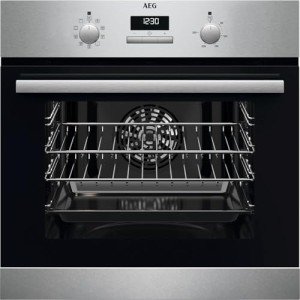Arlen Mattingley
Blog entry by Arlen Mattingley
A Comprehensive Guide to Buying a Single Oven: What You Need to Know
When it concerns kitchen home appliances, few items are as necessary as an oven. Whether you're a devoted baker, a weekend chef, or somebody who just wants to heat up leftovers, the best oven can make all the distinction in food preparation and cooking. Amongst the different kinds of ovens available in the market, single ovens stick out for their versatility and area efficiency. This post will guide you through the essential factors to consider when purchasing a single oven, outlining key features, types, and answering frequently asked concerns.
Comprehending Single Ovens
Single ovens, as the name recommends, include one cooking cavity. They are designed to handle various cooking tasks, including baking, roasting, grilling, and broiling. Ideal for compact kitchens or those who do not require the extra area provided by double ovens, single ovens can be built into kitchen cabinetry or stand alone.
Types of Single Ovens
Single ovens come in numerous types, each offering distinct advantages. Here are the primary types to consider:
| Type | Description |
|---|---|
| Conventional | Uses leading and bottom heating components for traditional cooking designs. |
| Convection | Uses a fan to circulate hot air, leading to even cooking temperatures. |
| Wall Ovens | Built into the wall for space-saving design while remaining user-friendly. |
| Steam Ovens | Introduces steam for moist cooking, excellent for baking and reheating. |
| Microwave Ovens | Integrates cooking and reheating functionalities with microwave technology. |
Secret Features to Consider
When looking for a single oven, it's important to examine numerous features that can enhance cooking experience and efficiency. Below are some essential characteristics to think about:
Size and Capacity:
- Measure the readily available space in your kitchen before choosing an oven. Most single ovens range from 24 to 30 inches in width.
- Capacity usually varies from 2.0 to 5.0 cubic feet, depending upon just how much you typically prepare or bake.
Energy Efficiency:
- Look for designs with an Energy Star ranking to minimize energy consumption and lower utility costs.
Oven Types:
- Consider whether you choose a traditional or convection model based upon your cooking choices.
Control Panel:
- Choose easy to use controls, whether they are digital or analog.
- Touch controls typically feature advanced features like programmable settings and timers.
Self-Cleaning Functionality:
- Self-cleaning alternatives save time and effort. Try to find ovens with steam or pyrolytic cleaning options.
Extra Features:
- Features such as hold-up start timers, multiple rack positions, and built-in probes can substantially enhance the cooking experience.
Popular Brands
When acquiring an oven, it is smart to consider brands known for their reliability and quality. A few of the prominent brands in the market consist of:
- Bosch
- Samsung
- LG
- Whirlpool
- Electrolux
- Frigidaire
Steps to Buy a Single Oven
Follow this structured process to streamline your purchasing decision:
Determine Your Cooking Needs:
- Assess your cooking routines and how often you use the oven.
Set a Budget:
- Single ovens can differ considerably in price from a couple of hundred to a number of thousand dollars. Set an affordable budget plan to streamline your options.
Research study Online:
- Read examines on various designs to determine reliability, performance, and functions.
Visit Showrooms:
- Visit appliance showrooms to see the ovens up close, check their quality, and understand their functions.
Ask for Expert Advice:
- Consult with sales representatives or cooking specialists for recommendations based upon your requirements.
Compare Warranty Options:
- Look into the guarantee policies. A detailed service warranty can provide peace of mind.
FAQs
1. What is the difference between a traditional oven and a stove?
Traditional ovens use top and bottom heat sources for cooking, while stove utilize a fan to flow hot air, causing much faster and more even cooking.
2. Can I set up a single oven myself?
While some property owners choose to install their ovens, it's typically advised to employ Buy A Single Oven professional to guarantee safety and compliance with regional structure codes.
3. How frequently should I clean my oven?
Frequency depends upon usage. A self-cleaning oven can significantly reduce the frequency, while manual cleaning ought to preferably be carried out seasonally if utilized regularly.
4. What additional functions should I try to find?
Look for functions such as a timer, delay start, and additional cooking modes like air fry or steam for enhanced performance.
5. Are gas ovens better than electric ovens?
The option between gas and electric depends mostly on personal choice. Gas supplies instantaneous heat and is typically favored by expert chefs, while electric ovens usually provide more constant cooking temperatures.

Investing in a single oven can elevate your cooking experience, paving the method for more enjoyable meal preparation and creativity in the kitchen. As you look for the ideal oven, consider your cooking habits, the oven's functions, and your readily available cooking space. Take your time to check out different options, and by following the guidance offered in this post, you can make an informed decision that satisfies both your cooking needs and budget requirements.
In summary, the ideal single oven will not only improve your cooking performance however likewise make your kitchen a more pleasurable space for cooking exploration. Pleased cooking!